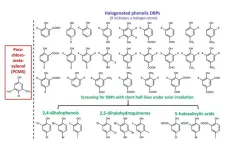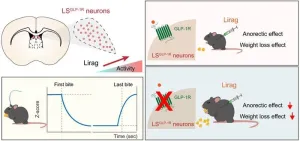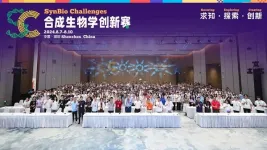(Press-News.org) They’re tiny drug-delivery systems 1000 times smaller than a human hair, but while nanomedicines have long been hailed as the future for treating debilitating and life-threatening diseases, their journey from lab to patient has many challenges.
Now, new findings from a global team of expert scientists in academia and industry has generated world-first research quality standards that will help slash costs and reduce the time it takes to develop advanced nanomedicine treatments and make them available for patients.
Published in Nature Nanotechnology today, and led by the University of South Australia’s Dr Paul Joyce and the University of Groningen’s Prof Hélder Santos, the DELIVER guidelines present early-stage recommendations for nanomedicine development during design, experiment, manufacturing, preclinical, clinical, regulatory, and business phases, so as to maximise the chance of clinical translation.
UniSA researcher, Dr Paul Joyce, says that recent successes in chemotherapy and vaccine-based nanomedicines could redefine what's possible in-patient care.
“We only need to think of the recent COVID-19 pandemic to realise the acute value of nanomedicines: more than two thirds of the global population received an mRNA vaccine to immunise against coronavirus, which was made possible by lipid nanoparticles,” Dr Joyce says.
“But while nanomedicines clearly represent a paradigm shift in healthcare, few have been translated to the clinic in relation to the amount of research that has been undertaken, and this has to change.
“Our research steps out the core principles that must be met to ensure nanomedicines can successfully overcome translational hurdles, helping researchers, clinicians, and regulatory bodies better manoeuvre through key steps and processes to avoid delays and enable faster clinical delivery.
“Adherence to this framework could see a boom in the successful development of new nanomedicines for a range of diseases, setting the stage for a new era of medical innovation.”
Prof Hélder Santos says that the new framework will transform the clinical delivery of nanomedicine.
“By addressing the key hurdles early on, the DELIVER approach can lead to the next generation of personalised therapies that are tailored to individual patients, offering new hope to those desperately in need.”
Notes for editors:
The article is available here: P Joyce, CJ Allen, MJ Alonso, M Ashford, MS Bradbury, M Germain, M Kavallaris, R Langer, T Lammers, MT Peracchia, A Popat, CA Prestidge, CJF Rijcken, B Sarmento, RB Schmid, A Schroeder, S Santhni, CR Thorn, KA Whitehead, CX Zhao, HA Santos. A Translational Framework to DELIVER Nanomedicines to the Clinic. Nature Nanotechnology 2024, Doi: 10.1038/s41565-024-01754-7.
…………………………………………………………………………………………………………………………
Contact for interview: Dr Paul Joyce E: Paul.Joyce@unisa.edu.au
Media contact: Annabel Mansfield M: +61 479 182 489 E: Annabel.Mansfield@unisa.edu.au
END
Global experts help nanomedicines DELIVER on healthcare promise
2024-09-06
ELSE PRESS RELEASES FROM THIS DATE:
Galaxies are much much bigger than we thought
2024-09-06
If this galaxy is typical, then the study, published today in Nature Astronomy, indicates that our galaxy is already interacting with its closest neighbour, Andromeda.
Where does a galaxy end and deep space begin? It seems like a simple question until you look more closely at the gas that surrounds galaxies, known as the circumgalactic medium.
The halo of gas surrounding the stellar disc accounts for about 70% of the mass of the galaxy – excluding dark matter – but until now has remained something of a mystery. In the past we have only been able to observe the gas by measuring the light from a background object, ...
AI helps distinguish dark matter from cosmic noise
2024-09-06
Dark matter is the invisible force holding the universe together – or so we think. It makes up around 85% of all matter and around 27% of the universe’s contents, but since we can’t see it directly, we have to study its gravitational effects on galaxies and other cosmic structures. Despite decades of research, the true nature of dark matter remains one of science’s most elusive questions.
According to a leading theory, dark matter might be a type of particle that barely ...
HKUST engineering researchers discover an effective and environment-friendly disinfectant
2024-09-06
A widely used disinfectant worldwide, chloroxylenol, has been associated with eco-toxicological threats in water environments due to its relatively high chemical stability and massive consumption. Researchers at the School of Engineering of the Hong Kong University of Science and Technology (HKUST) have discovered a promising alternative known as 2,6-dichlorobenzoquinone (2,6-DCQ), which works more effectively in combating certain common bacteria, fungi and viruses, and can be rapidly degraded and detoxified in receiving waters.
This groundbreaking study is led by Prof. ZHANG Xiangru from HKUST's ...
Excessive light pollution may increase risk of Alzheimer's, especially in younger people
2024-09-06
In some places around the globe, the lights never go off. Streetlights, roadway lighting, and illuminated signs can deter crime, make roads safer, and enhance landscaping. Undisrupted light, however, comes with ecological, behavioral, and health consequences.
In the US, some states have legislation in place to reduce light pollution; however, levels of light at night remain high in many parts of the country. Now, researchers there have investigated correlations between outside nightly light pollution and Alzheimer's disease (AD).
“We show that in the US there is a positive ...
Researchers reveal new central action target of the “weight loss miracle drug” GLP-1R agonists in mice
2024-09-06
A research group led by Prof. ZHU Yingjie from the Shenzhen Institute of Advanced Technology (SIAT) of the Chinese Academy of Sciences (CAS), has revealed the essential role of lateral septum (LS) neurons in mediating anorectic and weight-lowering effects of the anti-obesity drug— liraglutide in mice.
The study was published in the Journal of Clinical Investigation on Sep. 03.
Obesity is now among the top ten chronic diseases worldwide, causing a range of health issues and increasing the medical burden. Anti-obesity medications have shown greater efficacy than lifestyle changes and diet, with lower risks and fewer side effects ...
Youth igniting the flame of innovation: The third SynBio challenges held successfully in Shenzhen
2024-09-06
From August 7 to 10, the Third SynBio Challenges were held at the Guangming Tianan Cloud Park International Conference Center in Shenzhen, China.
The event was co-organized by Shenzhen Institute of Advanced Technology (SIAT) of the Chinese Academy of Sciences (CAS), Chinese Society of Biotechnology, Shenzhen University of Advanced Technology (SUAT), Shenzhen Institute of Synthetic Biology (iSynBio), Shenzhen Synthetic Biology Association, and the Shenzhen Industrial Innovation Center for Engineering Biology.
The SynBio Challenges aim to provide a platform for students to engage in exchange and competition within the synthetic biology ...
Broccoli and kale top the shopping list for lowering blood pressure
2024-09-06
Cruciferous vegetables, including broccoli, cabbage, kale, and cauliflower have been found to lower blood pressure, in comparison to root and squash vegetables, in middle-aged and older Australian adults with elevated blood pressure.
In a randomised, controlled, crossover trial, researchers from Edith Cowan University (ECU) found that consuming four serves a day of cruciferous vegetables resulted in a significant reduction in blood pressure, compared with four serves a day of root and squash vegetables including carrot, potato, sweet ...
Multi-user reinforcement learning based task migration in mobile edge computing
2024-09-06
Dynamic service migration is a key technology in Mobile Edge Computing(MEC). In a multi-user service migration scenario, the states of all users are combined into a global state, which leads to the instability of the system and ignores the influence of multiple users. It is more and more challenging to design an effective migration strategy to balance migration costs and latency in a multi-user distributed environment.
To solve the problems, a research team led by Degan ZHANG published their new research on 15 August 2024 in Frontiers of Computer Science co-published by Higher Education Press and Springer Nature.
Considering ...
Researchers develop mechanism that predicts severity of aggressive form of breast cancer
2024-09-06
Scientists at Huntsman Cancer Institute at the University of Utah (the U), the National Cancer Institute-designated cancer center for the Mountain West, have made a significant breakthrough in predicting the prognosis of triple-negative breast cancer (TNBC), a particularly aggressive disease. Their research, published in JCO Precision Oncology as part of the TOWARDS study, has led to the development of a new mechanism that accurately forecasts the aggressiveness of TNBC. This advancement could revolutionize the way doctors treat TNBC, allowing them to identify higher-risk patients and tailor precise treatments.
Currently, TNBC lacks reliable methods to predict recurrence after ...
Research vessel Resilience charts course to the future of marine research
2024-09-06
SEQUIM, Wash.—Officials gathered at the Sequim campus of the Department of Energy’s Pacific Northwest National Laboratory today to dedicate DOE’s first hybrid-electric research vessel, RV Resilience.
The event marks the start of a new era of marine energy research at PNNL-Sequim, part of DOE’s Office of Science national laboratory system and Resilience’s new home port. Speakers at the dedication included U.S. Sen. Maria Cantwell, U.S. Rep. Derek Kilmer, Washington State Rep. Steve Tharinger and representatives from DOE and PNNL.
“DOE is focused on ...





